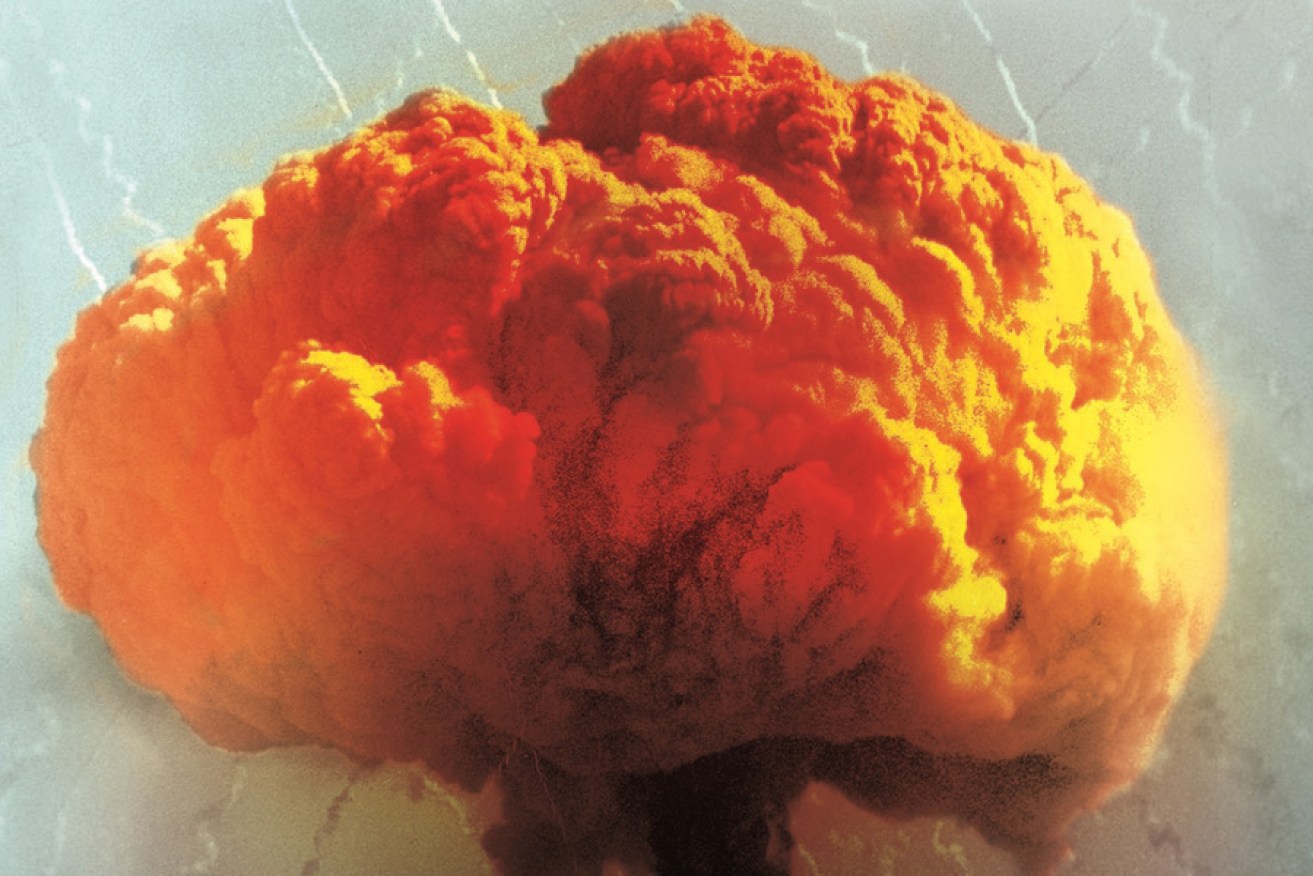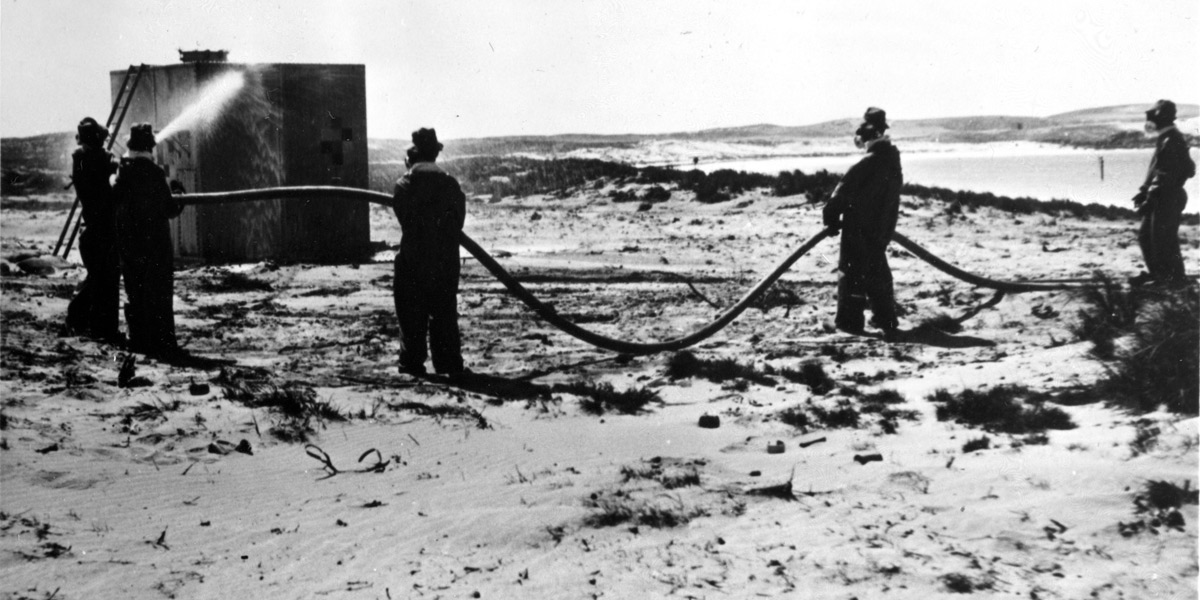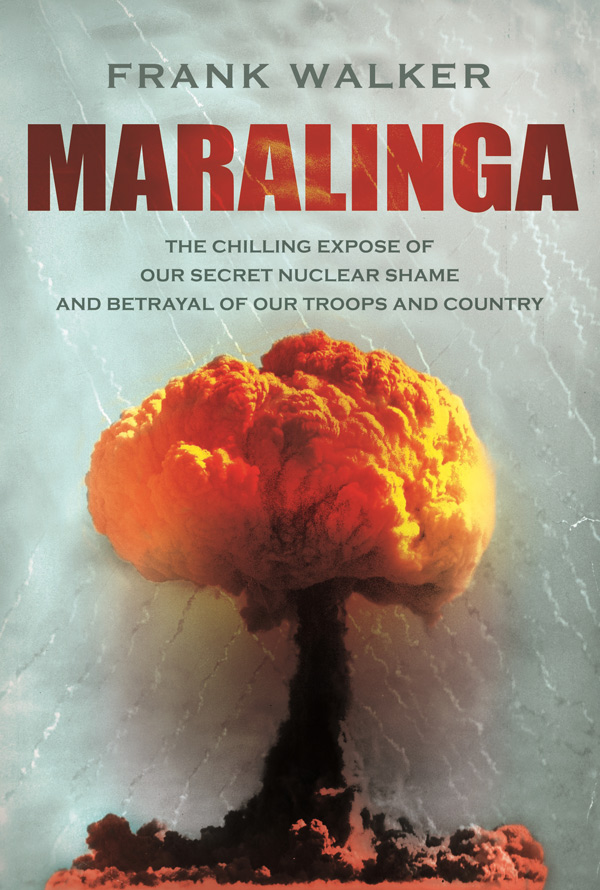Lessons to be learned from Maralinga

Cover detail from Maralinga, by Frank Walker.
The horrific effects of the 1950s and ’60s British nuclear tests in Australia offer lessons about the danger of government decisions and actions shrouded in secrecy, says writer Frank Walker.
The author of nuclear testing exposé Maralinga, who spoke at an event in Adelaide last week, says the fear created by the threat of atomic war with the Soviet Union helped the Menzies Government to justify using Australia for what he describes as a “laboratory experiment”.
Much of the information about the health risks of testing was kept secret from the population – including residents of Aboriginal communities near test sites and the servicemen ordered to fly into mushroom clouds or drive into the blast zones.
“My belief is the impact is going to go on for many, many generations,” says Walker, a former journalist who is scathing about what he labels an act of betrayal by political leaders.
“The real horror of this is the children and grandchildren of nuclear veterans who can have inflicted on them genetic problems inherited from the veterans.”
Walker’s book includes chilling descriptions from those who witnessed the nuclear blasts. Equally disturbing is the catalogue of reported health effects resulting from radiation poisoning – including cancer, infertility, miscarriages and stillbirths.
“What I find saddest is that a lot of these blokes [the test veterans] have never been able to move on with their lives after what they saw and experienced at Maralinga,” he tells InDaily. “For some of them, it’s just taken over their lives.”

Hosing down after a British atomic test, Monte Bello islands, 1952. Photo: Mary Evans Picture Library
For Walker, the most shocking of all his research finds was a report he discovered at the British National Archives.
It detailed a discussion between scientists and officials at the UK Atomic Energy Research Establishment in 1957, where it was agreed they would need the bodies of dead Australian babies and children – “as many samples as possible” – to see how much of the radioactive isotope Strontium-90 was being absorbed by humans through the food chain.
Parents were not told about the testing, yet over 21 years, bones were taken from 22,000 corpses of babies, infants, children, teenagers and young adults.
“The cold-blooded, scientific way that they go about deciding to take the bones from little dead babies to see how much radioactivity has been absorbed into their little bodies through milk … it was just shocking,” says Walker.
“It bought home to me that the whole of Australia was used as a laboratory experiment … and the experiment carried on for 21 years.
“It’s quite a disgusting episode in Australia’s history and I think there’s a lesson to be learnt there for what’s going on today when we are having more and more secrecy imposed on us to stop us knowing what’s going on.”
Walker interviewed more than 50 witnesses to the testing at central Australia sites, including Maralinga, which the traditional owners are now seeking to turn into a tourist drawcard.
The following extract from chapter four of his book describes the impact of a 1953 explosion at Emu Field on an Aboriginal community in far north South Australia:
The Mystery of the Black Mist
While Ed Cheney and his crew were preparing to fly into the atomic cloud of the Totem One bomb at Emu Field early in the morning of 15 October 1953, 173 kilometres to the north-west, eleven-year-old Yami Lester was playing in the red dust at Wallatinna, an isolated cattle station homestead. The Aboriginal boy filled a tin with red dust and rolled it around, keeping it going as long as he could before the dust trickled out. It was a simple game but in the flat, stony, desert country of far north South Australia, a boy had to make his own toys. Yami Lester was with his family in the heart of his Yankunytjatjara tribal land, and many Aboriginal people were at the camp near the homestead.
Most were just getting up. One was boiling the billy on the camp fire for the morning tea. Some had already left for work on the cattle station.
Suddenly Lester heard a huge bang in the distance. It was like an explosion, but Lester had never heard anything like it. It was a deep rumble, as though coming from the very bowels of the earth, almost like three or four bangs in quick succession. He stopped and listened to see if there would be another bang. The noise had come from the south. But there was nothing out there that could make such a noise.
Puzzled adults in the camp asked each other what it might be. One suggested the army had fired a cannon. They’d heard the noise made by explosive testing coming from the Woomera testing range before, but that was too far away from Wallatinna for noise to reach. Lester shrugged and went back to playing until his mother had made damper for breakfast. Lester loved the warm, fresh bush bread and sat down with his mother, Pingkayi, and father, Kanytji, to eat.
The next morning, Lester noticed a big black cloud appear low on the horizon. It was rolling in from the south and was behaving very strangely. It wasn’t like any other cloud Lester had ever seen. It was black, greasy looking and the sun shining on it glinted back, like it was reflecting off something solid. It was more like a black mist or dust storm. But there was no wind. Everything was quiet. Others noticed the low cloud too, and stopped what they were doing to watch it advance slowly and steadily towards them. It was very dark and made a whispering sound as it slowly rolled through the mulga trees.
‘It stretched as far as I could see,’ Yami Lester told the Royal Commission when he gave evidence in 1985.
‘As it came over the camp it blocked the sun. Everything went dark. It was like a thick black mist rolling along. It took a long time to pass over the camp. The old people were frightened as they’d never seen anything like it before. They thought it was “Mamu”. It’s a word that doesn’t translate directly, but applies to something strange you don’t understand that could be a bad or evil spirit. Mamu is frightening.’
The older men waved their woomeras at the cloud, trying to scare off this Mamu devil spirit. Aboriginal lore says if you wave your throwing stick at Mamu, it takes fright and goes another way. But this black mist just kept on coming. Women furiously dug holes to climb into as the black mist passed over them, telling the kids to get in and lie low. The black mist had a nasty metallic smell, like you get from smelter factories. Lester climbed into a hole with one of his relatives. It wasn’t very deep and Lester could feel sticky dirt from the strange black mist and heard the faint hiss of it settling all around him.
‘The cloud went over us and it kept on going for some time and then it was over.’
Kanytji Lester thought the noise was the sound of Wanambi, the water serpent of the Dreamtime, thumping the ground as it made water holes. Pingkayi remembered the cloud had a really strong pungent smell that made her vomit. A black, moist, sticky substance was left on the leaves of bushes, on their huts and on the ground as the cloud passed over them.
Pingkayi said that within a day several people in the camp fell sick. Their eyes became sore and watery. They had intense stomach pains with diarrhea and vomiting. Skin rashes appeared on many of the people touched by the black substance. Yami Lester started vomiting and had diarrhea. His eyes were incredibly sore and weeping.
Lester told the Royal Commission he thought several people died over the next few days. He couldn’t be sure how many as they all moved camp. They moved several times over the next weeks. It’s difficult to know how many died as Aboriginal people don’t talk of the dead, moving on each time they bury a body.
‘When a death happens the young people are not supposed to know about it. I was young at the time and I only guessed because people were upset and crying.’
Pingkayi said ‘one thousand people’ died. The translator for the Royal Commission explained this was not a literal number. Pingkayi was just explaining that many people died. Many other Aboriginals said they knew people who died in the next few days after the black mist passed over Wallatinna. Some said a dozen old people and children died. Others said about forty. No doctor or medical official came to Wallatinna and the people in the camp quickly moved away.
Lester was frightened, as within days his eyes closed and he couldn’t see. He eventually received treatment at a hospital and sight returned in his left eye, but everything at a distance was a blur. He was completely blind in his right eye. One morning he woke up and he was blind in his left eye too.
Doctors dismissed Lester’s questions years later about whether it could have been caused by the black mist and exposure to radiation. They said the blindness came from him having measles as a child. But Lester said he never had measles.
Renowned eye doctor Professor Fred Hollows said it was unheard of for a person Lester’s age to get a trachoma that causes blindness. He said if Lester was exposed to whole body irradiation between the ages of eight and twelve it was possible his immune system could be so depressed it might blind him in his teenage years.
Extract from Maralinga, by Frank Walker, published by Hachette Australia, $32.99.





